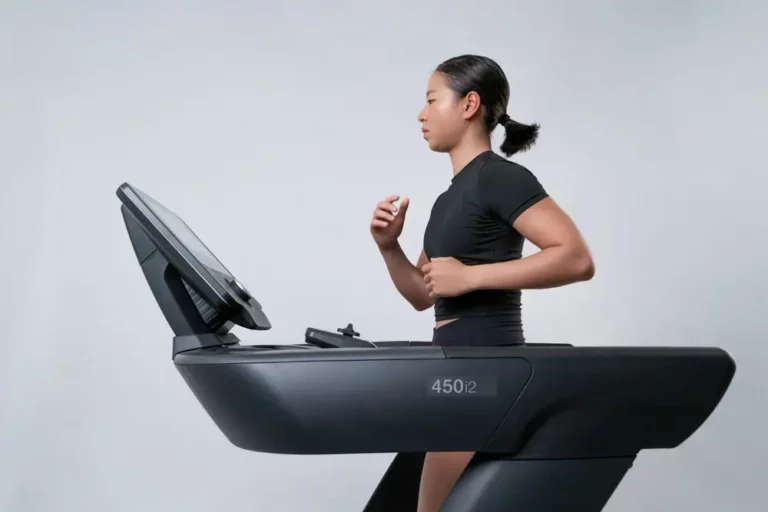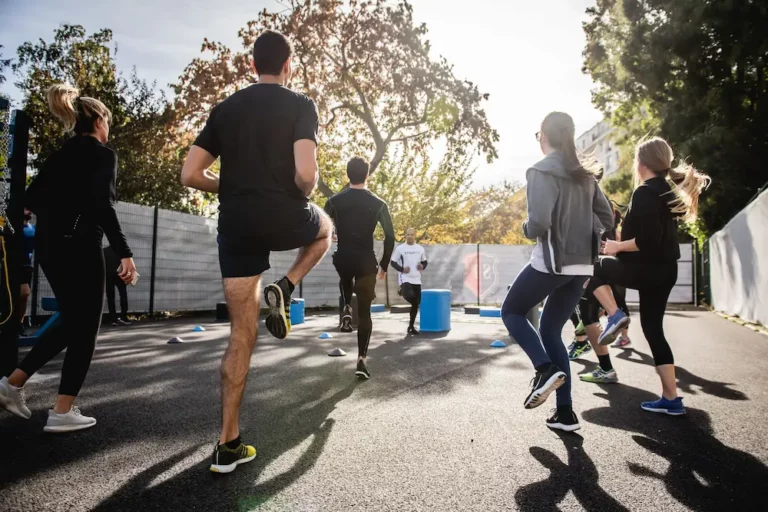Pilates Before or After Cardio: Which is Better?
When it comes to planning a workout routine, one common question is whether to do Pilates before or after cardio. Both Pilates and cardio exercises offer numerous health benefits, and the order in which you do them can impact the effectiveness of your workout. As a fitness enthusiast, I have experimented with different combinations of Pilates and cardio workouts and have found that the order in which you do them largely depends on your fitness goals.
If you are looking to improve your cardiovascular health, then doing cardio before Pilates may be the best option for you. Cardio exercises such as running, swimming, and walking are great for improving your heart health, burning calories, and increasing your endurance. Doing cardio before Pilates can help to warm up the body and prepare you for the more intense Pilates exercises. Additionally, doing cardio before Pilates can help you burn more calories during your workout and increase your metabolism for hours afterward.
On the other hand, if you are looking to improve your flexibility and strength, then doing Pilates before cardio may be a better option for you. Pilates is a low-impact exercise that focuses on building core strength, improving flexibility, and enhancing posture. By doing Pilates before cardio, you can prime your body for the more intense workout and improve your overall performance. Additionally, doing Pilates before cardio can help you prevent injuries by preparing your muscles and joints for the more intense workout.
Understanding Pilates
What is Pilates?
Pilates is a low-impact exercise that focuses on strengthening the core muscles, improving flexibility, and enhancing body awareness. It was developed by Joseph Pilates in the early 20th century and has gained popularity worldwide due to its numerous benefits.
Pilates involves a series of movements that are performed on a mat or on special equipment such as the Reformer, Cadillac, and Wunda Chair. The exercises are designed to target specific muscle groups, with a particular emphasis on the abdominals, back, and hips. Pilates also emphasizes proper breathing techniques, which help to increase oxygen flow and improve overall body function.
Benefits of Pilates
There are many benefits to practicing Pilates, including:
- Improved posture: Pilates helps to strengthen the muscles that support the spine, which can lead to better posture and reduced back pain.
- Increased flexibility: Pilates exercises focus on stretching and lengthening the muscles, which can lead to increased flexibility and range of motion.
- Stronger core: Pilates is known for its emphasis on the core muscles, which can lead to a stronger and more stable midsection.
- Reduced stress: Pilates exercises are slow and controlled, which can help to reduce stress and promote relaxation.
- Improved balance: Pilates exercises require a great deal of balance and coordination, which can help to improve overall balance and reduce the risk of falls.
Overall, Pilates is a great exercise for anyone looking to improve their overall fitness and well-being. Whether you’re a beginner or an experienced athlete, there are Pilates exercises that can help you achieve your goals.
Understanding Cardio
As someone who enjoys working out, I know that cardio is an essential part of any fitness routine. But what exactly is cardio, and what are the benefits of incorporating it into your workout regimen? In this section, I’ll explore these questions and provide some insights into this popular form of exercise.
What is Cardio?
Cardio, short for cardiovascular exercise, is any physical activity that increases your heart rate and gets your blood pumping. It’s also commonly referred to as aerobic exercise. Some examples of cardio include running, cycling, swimming, and dancing. The American Heart Association recommends at least 150 minutes of moderate-intensity cardio per week, or 75 minutes of vigorous-intensity cardio per week.
Benefits of Cardio
There are numerous benefits to incorporating cardio into your workout routine. Here are just a few:
- Improved Heart Health: Cardio is great for your heart, as it strengthens the heart muscle and improves circulation. This can help reduce your risk of heart disease, stroke, and other cardiovascular problems.
- Weight Loss: Cardio is an effective way to burn calories and lose weight. Depending on the intensity of your workout, you can burn anywhere from 200 to 600 calories in a 30-minute cardio session.
- Increased Endurance: Regular cardio can help improve your endurance and stamina, making it easier to perform everyday activities and participate in sports or other physical activities.
- Reduced Stress: Cardio is a great way to reduce stress and improve your mood. It releases endorphins, which are natural mood boosters and can help you feel more relaxed and energized.
Overall, cardio is an essential part of any fitness routine. Whether you’re looking to improve your heart health, lose weight, or simply feel better, incorporating cardio into your workouts can help you achieve your goals.
Pilates Before Cardio
When it comes to working out, there are a lot of different options to choose from. Two of the most popular options are Pilates and cardio. While there is no right or wrong answer to whether you should do Pilates before or after cardio, there are pros and cons to both. In this section, I will discuss the benefits and drawbacks of doing Pilates before cardio.
Pros of Doing Pilates Before Cardio
- Warms up muscles: Doing Pilates before cardio can help to warm up your muscles and prepare your body for the more intense cardio workout. Pilates is a low-impact exercise that focuses on strengthening and stretching the muscles, which can help to improve your flexibility and reduce the risk of injury during your cardio workout.
- Improves posture and balance: Pilates is a great way to improve your posture and balance. By doing Pilates before cardio, you can improve your alignment and reduce the risk of injury during your cardio workout.
- Strengthens core muscles: Pilates is an excellent way to strengthen your core muscles. By doing Pilates before cardio, you can improve your core strength, which can help to improve your overall fitness and reduce the risk of injury during your cardio workout.
Cons of Doing Pilates Before Cardio
- May reduce cardio performance: Doing Pilates before cardio may reduce your cardio performance. This is because Pilates can tire out your muscles, making it more difficult to perform at your maximum capacity during your cardio workout.
- May not burn as many calories: Pilates is a low-impact exercise that does not burn as many calories as cardio. By doing Pilates before cardio, you may not be able to burn as many calories as you would if you did cardio first.
Overall, there are pros and cons to doing Pilates before cardio. If you are looking to warm up your muscles, improve your posture and balance, and strengthen your core muscles, then doing Pilates before cardio may be a good option for you. However, if you are looking to maximize your cardio performance and burn as many calories as possible, then doing cardio before Pilates may be a better option.
Pilates After Cardio
When it comes to deciding whether to do Pilates before or after cardio, there are advantages and disadvantages to both. In this section, I will focus on doing Pilates after cardio.
Pros of Doing Pilates After Cardio
One of the main benefits of doing Pilates after cardio is that your body is already warmed up and ready to move. This means that you can jump right into your Pilates routine without having to spend extra time warming up your muscles.
Another advantage of doing Pilates after cardio is that it can help you to cool down and stretch out your muscles after a high-intensity cardio workout. This can help to reduce soreness and prevent injury.
Additionally, doing Pilates after cardio can help to improve your balance, posture, and core strength. This is because your muscles are already fatigued from the cardio workout, which forces your body to work harder to maintain proper form during the Pilates exercises.
Cons of Doing Pilates After Cardio
One potential disadvantage of doing Pilates after cardio is that you may not have as much energy or focus as you would if you did Pilates first. This can make it more challenging to perform the exercises with proper form and technique.
Another drawback of doing Pilates after cardio is that it may not be as effective for weight loss or calorie burning as doing cardio first. This is because your body has already used up some of its energy stores during the cardio workout, which can make it more difficult to burn additional calories during the Pilates session.
Overall, whether you choose to do Pilates before or after cardio will depend on your personal preferences and fitness goals. However, if you do decide to do Pilates after cardio, be sure to listen to your body and adjust your intensity as needed to avoid injury or burnout.
Factors to Consider
When deciding whether to do Pilates before or after cardio, there are a few factors to consider. These include your fitness goals and your current fitness level.
Your Fitness Goals
Your fitness goals are an important factor to consider when deciding whether to do Pilates before or after cardio. If your goal is to improve your cardiovascular health, doing cardio before Pilates may be the best option for you. This is because cardio exercises can help to increase your heart rate and improve your overall fitness level.
On the other hand, if your goal is to improve your posture, balance, and flexibility, doing Pilates before cardio may be the best option for you. Pilates exercises can help to strengthen your core muscles, which can improve your posture and balance. Additionally, Pilates can help to increase your flexibility, which can help to reduce your risk of injury during other workouts. There are plenty of great pilates programs, such as Corefirst and Better Me.
Your Current Fitness Level
Your current fitness level is another important factor to consider when deciding whether to do Pilates before or after cardio. If you are new to exercise or have a low fitness level, it may be best to start with Pilates before cardio. This is because Pilates exercises are generally low impact and can help to improve your overall fitness level without putting too much strain on your body.
On the other hand, if you have a high fitness level and are looking for a more intense workout, doing cardio before Pilates may be the best option for you. This is because cardio exercises can help to increase your heart rate and provide a more intense workout.
Overall, the decision to do Pilates before or after cardio will depend on your fitness goals and current fitness level. It is important to listen to your body and choose the option that feels best for you.
Conclusion
In conclusion, whether you should do Pilates before or after cardio depends on your fitness goals and personal preferences. If you want to warm up your body and burn more calories, then doing cardio before Pilates might be the way to go. On the other hand, if you want to improve your posture, balance, and flexibility, then doing Pilates before cardio might be a better option.
It’s important to remember that both Pilates and cardio have their own benefits and can be incorporated into a fitness routine. You don’t have to choose between one or the other. Instead, you can combine them for optimal results.
If you’re new to Pilates or cardio, it’s always a good idea to start slow and gradually increase the intensity of your workouts. This will help you avoid injury and ensure that you’re getting the most out of your workouts.
Remember to listen to your body and adjust your workouts as needed. If something doesn’t feel right, don’t push yourself too hard. Take a break and come back to it when you’re ready.
Overall, Pilates and cardio are both great ways to stay fit and healthy. Whether you choose to do Pilates before or after cardio, the most important thing is to stay consistent and enjoy the process.







